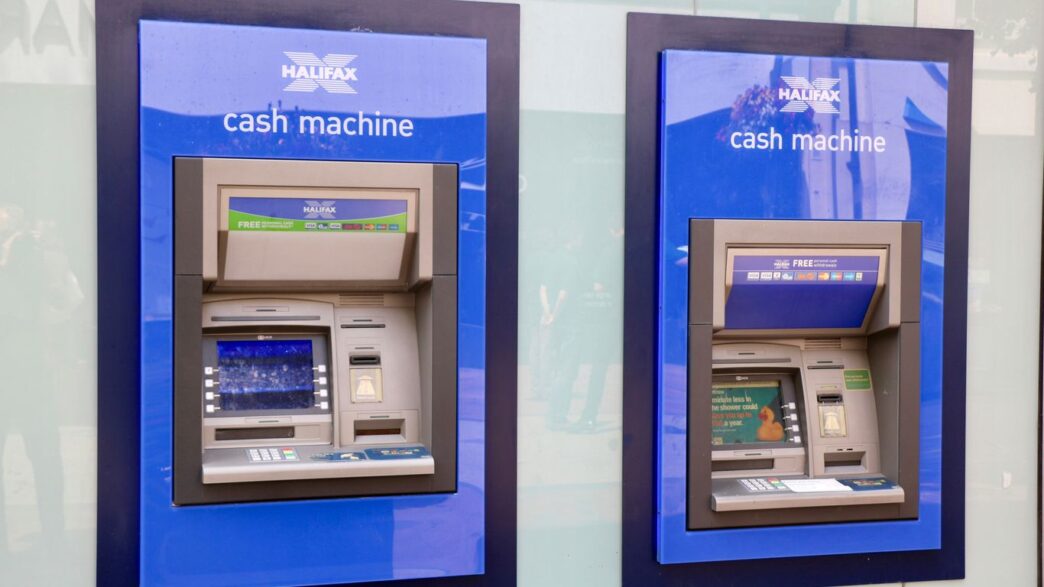Banking has changed a lot in the last few years. People expect more from their banks, especially with so many digital options out there. User experience banking is now all about making things easy, personal, and trustworthy—whether you’re using an app or walking into a branch. Banks are trying to keep up by mixing technology with real human touch, listening to customers, and finding new ways to keep people interested. Let’s look at how banks are changing the way they connect with customers in the digital era.
Key Takeaways
- People want banking to be simple and available everywhere, especially on their phones.
- Personalized services, rewards, and clear communication keep customers engaged and loyal.
- Data and artificial intelligence help banks understand what customers need and improve services.
- Building trust with honesty and community values is just as important as new technology.
- Banks face challenges with rules and fast changes, but focusing on user experience banking helps them stand out.
Evolving Expectations in User Experience Banking
Banking is changing fast, fueled by how people use technology every day. The old way—waiting in line at a branch—just isn’t what people want anymore. Today, banking has to fit around customers’ lives, not the other way around. Let’s look at what’s shaping these new expectations.
Digital Adoption Shaping Customer Behavior
Banking customers have gone digital, and that’s reshaping everything. Think about how we handle money now:
- Most people check their accounts from their phones—sometimes more than once a day.
- Payments, transfers, and budgeting tools are used online far more than at a branch desk.
- People want answers fast, whether from a chatbot or a quick tap on their app.
Here’s a snapshot of mobile banking adoption (2024):
| Group | Use Mobile Banking (%) |
|---|---|
| All customers | 89 |
| Millennials | 97 |
When people get used to things being quick and easy, they expect the same from their bank. That means forms are shorter, options are clearer, and help is always within reach—maybe even from virtual assistants or smart banking agents, much like how emerging technology trends drive progress in other industries.
Omnichannel Accessibility and Mobile-First Mindset
It’s not just about having an app or a website. Banks need to meet people wherever they happen to be. These days, it looks like this:
- A person might start a loan application on their laptop, check on it from their phone, and finalize it at a branch.
- Communication needs to be easy—secure messages, live chat, or video calls.
- There are still people who want to call or visit in person, so banks can’t go 100% digital.
Customers now expect:
- Smooth handoff between devices and channels.
- Equal access—features should work well on mobile, not just on desktop.
- Personal choice—customers want to pick how and when they interact.
Balancing Online Innovation with Physical Branch Presence
Even as banking moves online, there’s still a role for physical branches. People may not visit as much, but they like knowing branches are there if they need help. Banks face the tricky job of deciding which services stay physical and which go digital.
A few reasons local branches continue to matter:
- Some customers just feel better talking big decisions through face-to-face.
- Complex services (like mortgages or business banking) are often easier to handle in person.
- For many, branches represent trust and reliability.
The challenge now is to balance digital growth while keeping branches available, updating them for modern needs. It’s a mix: more self-service kiosks, better-trained staff, and spaces set up for helping, not just transactions.
Banking expectations keep shifting, which means the journey of redesigning services never really stops. The banks that figure out how to blend technology with a human touch, and make things simple, will win the most loyal customers.
Personalization and Customer-Centric Engagement Strategies
The world of banking gets a little more personal every day. Customers just don’t want a one-size-fits-all app—they expect their bank to recognize their needs, talk to them in a way that feels right, and make things easier. Banks that actually pull this off usually see happier customers, more loyalty, and better word-of-mouth. Let’s break down how banks are doing this today.
Utilizing Customer Insights for Tailored Services
Banks collect a lot of information, but it’s what they do with it that matters. Turning raw customer data into experiences that feel tailor-made is now a necessity, not a luxury. There are a few key moves here:
- Grouping customers based on habits (like spending patterns or preferred channels)
- Detecting life moments—from your first savings account to a mortgage—then offering real help at the right time
- Adjusting financial advice or offers based on actual transactions
For example, by using personalized experiences in digital engagement, some banks have made it easier for families to save for college or for freelancers to manage unpredictable income. This extra bit of attention makes customers feel seen.
Reward Systems and Gamification in Banking
Banking and fun usually don’t appear in the same sentence, but that’s changing. Some financial apps now use playful hooks to get people involved. Common tactics include:
- Points for saving, spending in certain categories, or learning about money
- Badges for hitting milestones (like saving for six months straight)
- Leaderboards that let people see how they stack up—and encourage friendly competition
- Instant perks for small wins, like local discounts when using the debit card
A simple reward system can give customers a reason to keep checking back, turning routine tasks into something worth a small celebration.
Customized Onboarding and Communication
No one wants to read long, confusing welcome letters. Updating onboarding means:
- Using short, smart questionnaires to set up preferences in minutes
- Sending practical tips based on what matters—for example, reminders if you’re close to an overdraft, or offers for students around graduation season
- Letting people choose how they hear from the bank: text, app push, email, or even old-fashioned calls
Banks that get onboarding right help people unlock new tools and features—without confusion. Clear and steady communication, tuned to individual needs, builds trust over time.
So, while the tech side of banking keeps on growing, it’s still the human touches—rooted in data, tailored rewards, and real communication—that make customers stick around. And when banks listen, personalize, and chat in a language people understand, everyone wins in the long run.
The Role of Data and Artificial Intelligence in User Experience Banking

AI and data are changing what it means to be a customer at a bank, and not always in ways people expect. Some stuff works, some doesn’t. But one thing is clear: banks can’t ignore how much data and smart algorithms are shaping today’s banking world.
Leveraging Analytics for Deeper Insights
Banks have more data about their customers than ever. Using analytics, banks try to spot patterns in customer spending, saving, and borrowing to offer smarter service. This isn’t just about offering another credit card: it could mean alerting you to a duplicate charge, sending tailored advice, or flagging unusual activity before you even notice it yourself. Sometimes this works, sometimes it backfires if the advice feels off-base or invasive. But the goal is the same:
- Recognize individual customer needs earlier
- Adjust communication based on actual behavior, not guesswork
- Prevent problems before they turn into customer headaches
A lot of banks still struggle making use of the data they have, but those that do it well are starting to stand out.
AI and Conversational Banking Agents
If you’ve messaged a bank’s chatbot, you know sometimes it’s more pain than help. Satisfaction isn’t exactly high yet:
| Channel | Satisfaction Rate (%) |
|---|---|
| Human online chat | 66 |
| AI-powered chatbots | 26 |
People like to talk to real humans, especially when things get complicated. AI is improving, though, and new agents can handle routine stuff (checking your balance or transferring money) much faster than waiting in line or on hold. Banks are now tweaking AI to:
- Handle more complex requests (not just balance checks)
- Remember past conversations for smoother chats
- Pass you to a human automatically for tougher questions
Still, the verdict is out on whether most customers trust AI with big decisions.
Transforming Feedback into Product Innovation
Banks rarely used to listen closely to feedback unless there were lots of complaints. Now, with all the data from surveys, reviews, and chat logs, they can actually see what’s working (and what’s not). The smart banks use this new info in real time to fix products or make new ones. For example:
- Finding out what confuses customers about mobile apps
- Seeing which fee structures people hate
- Spotting bugs quickly before they grow into bigger issues
Banks that act on real, everyday feedback end up with products people actually like using. Feedback isn’t just another box to check—it guides what gets built next.
Building Trust through Transparency and Authenticity
Earning customer trust is no longer just about face-to-face interactions at a local branch. Trust starts the moment a user downloads your banking app or visits your site, and every click counts. More than ever, people want their money handled by banks that are upfront, honest, and most importantly, human in their dealings. For digital banks, this is even harder, since many folks still see traditional banks as more stable. Still, even for the big banks, building real relationships in this digital world means getting serious about transparency and authenticity.
Human-Centered Digital Interactions
When tech does most of the talking, banks risk losing that personal touch, which can make customers feel like just a number. To keep things human:
- Offer live chat with real agents, especially for complex issues.
- Give people choices—AI chatbots are useful, but let customers switch to a human if they want.
- Use simple language on screens, not banking jargon or corporate-speak.
- Always follow up after big changes or problems, so people know they’re heard.
Feeling truly valued by your bank makes a huge difference; as shown in a Forrester report, 92% of customers who feel valued intend to stick around for the long haul.
Clear Communication of Fees and Policies
Few things annoy banking customers more than surprise fees or confusing terms. Banks have to put their cards on the table:
- Publish all fees clearly, ideally in easy-to-read tables.
- Send notifications before any new charges or policy changes.
- Make policies short, straightforward, and accessible on both the app and website.
Here’s a simple way banks might display common fees:
| Service | Standard Fee | How Notified |
|---|---|---|
| Monthly Maintenance | $5 | Monthly Statement |
| Overdraft Fee | $35 | Real-time Alert |
| ATM Out-of-Network | $3 | Transaction SMS |
It’s much easier for people to plan—and to trust—when fees aren’t hidden in fine print.
Brand Alignment with Community Values
Today’s banking customers want their financial partner to support more than just their wallet.
- Support local projects or charities and spotlight these efforts on your social feeds.
- Offer products or perks that match community needs, like eco-friendly banking or small business support.
- Encourage feedback from customers on what matters most to them; act on this to build loyalty.
Some banks champion causes, while others stick to old methods. Those making inclusivity and purpose clear can stand out in fintech news for all the right reasons. If you show your priorities—and actually prove it with actions—customers pick up on that vibe quickly.
Banks that embrace open, honest dialog and act with their community’s best interests lead the way in trust. It sounds basic, but in an age where doubts about privacy and big promises run rampant, the little things—clarity, humanity, and alignment—really do matter.
Optimizing Omnichannel and Self-Service Experiences
People want their banking to work wherever and whenever they need it—on a computer, over the phone, in an app, or at a branch down the street. Banks that don’t connect these options in a meaningful way risk leaving customers behind. This section looks at how banks are getting smarter about combining all of these touchpoints while also giving people more control through self-service options.
Integrating Digital and Offline Touchpoints
Customers expect a fluid switch between digital and physical banking. Life doesn’t stick to one channel, and neither should your money. Most folks are using apps every week but still want a branch nearby just in case. According to a recent survey, 82% of people feel strongly about having access to a local branch even as digital tools gain ground. For many banks, the solution is integrating technology that works with what’s already there, rather than rebuilding everything from scratch. Fintech’s steady push into banking highlights how important this is—if the banks can’t keep pace with nimble tech competitors, customers may just drift away.
You can sum up smart integration by:
- Making account info and transaction history available everywhere, instantly.
- Giving customers the option to start a task in one place (like on an app) and finish it another (such as in person).
- Focusing on consistency—a balance between the digital and personal connection at every step.
Enhancing Mobile Banking Capabilities
Mobile banking is no longer just a convenience—it’s the expectation. Around 89% of people now use mobile banking, and, remarkably, that jumps to 97% with younger customers. But mobile apps aren’t perfect. Many still lag behind desktop experiences, especially when it comes to more complex services. Banks that want to stand out are rolling out better features, such as:
- Instant card activation and replacement.
- Mobile check deposits with fast processing.
- Real-time spending alerts and budget tracking.
Some are trying out innovative services like co-browsing, where a support agent can walk a customer through the app in real-time—an approach that saw 300,000 co-app sessions at one bank last year, outpacing older support techniques by a wide margin.
Improving Self-Service Platforms for Convenience
People appreciate being able to get things done without waiting on hold or standing in line. Self-service options are everywhere, but not all are created equal. When self-service falls short, frustration spikes. The trick is to make these tools flexible and responsive, not just generic portals. Here are some ways banks are making self-service actually useful:
- Chatbots that answer real questions—not just canned responses, but actual support.
- Easier access to routine features, like resetting passwords, managing cards, and making transfers without jumping through hoops.
- Offering a quick handoff to a human agent when needed (not leaving you trapped in a digital maze).
The best self-service systems let customers control their experience but give them a way out if they hit a wall. That’s the line between a helpful platform and a useless one.
Banks that get omnichannel and self-service right are those that build on what works, adopt new ideas, and actually listen to what people need rather than guessing. It’s an ongoing process shaped by technology, customer habits, and plain common sense.
Driving Loyalty and Advocacy through Enhanced Engagement
Banking isn’t just about accounts and interest rates anymore. Today, banks are focusing on building lasting loyalty and turning satisfied customers into active advocates. This shift is changing how financial brands interact and grow. Banks realize that the stronger the engagement, the longer customers stay and the more likely they are to recommend their bank to others. Let’s break down how this works in practice.
Loyalty Programs Driving Retention
Banks use loyalty programs to encourage ongoing relationships. The key is making these programs actually useful—not just another points system customers forget about. Modern banks are:
- Offering tiered rewards (higher spending or saving unlocks more benefits)
- Providing cashback on daily purchases, not just big transactions
- Creating partnerships (concert tickets, local businesses, travel perks)
- Investing in easy-to-redeem processes, so rewards aren’t locked behind lots of steps
Here’s a basic view of what motivates customers to stick with a bank, according to recent trends:
| Motivation | Customer Impact |
|---|---|
| Useful rewards | Feels appreciated |
| Simple redemption process | Less frustration |
| Variety of reward types | More personal choice |
Banks featured by TechBullion’s fintech coverage often showcase such innovative loyalty approaches to stand out in a crowded market.
Empowering Customers Through Education
It sounds simple, but teaching people how to actually use financial products—without dumping jargon on them—keeps them around. Education helps customers make better choices, avoid fees, and get more from their bank.
Important ways banks are doing this:
- Short, clear video explainers inside apps
- In-app simulators for mortgages, savings, and investing
- Live web sessions or community Q&As for complex topics
With digital tools, even something like opening a savings account can come with tips about budgeting or step-by-step guides—making customers feel less lost.
Active Listening and Responsive Feedback Loops
Feedback isn’t just for venting complaints; it’s fuel for change. Banks that actually respond to suggestions—maybe even sending a note when something improves—make users feel like they matter. You might’ve seen:
- App feedback forms with actual follow-up
- Quick surveys after using customer service
- Public acknowledgments of customer ideas
Top-performing banks treat this like a cycle:
- Listen openly and without making it tough to give feedback
- Respond quickly—sometimes even just a “thanks, we’re working on it”
- Change things based on what major groups of customers ask for
- Share updates clearly, so people know they have influence
Customers who feel heard and see their ideas in action? They’ll tell friends, post online, and stick around for years. That’s real advocacy, and it’s hard for competitors to copy.
Overcoming Challenges in the Digital Transformation Journey

The push for digital banking is not slowing down, but financial institutions keep running into major roadblocks. Every bank wants to be more digital, but the journey is full of hurdles—technical, cultural, and regulatory. Let’s talk about what’s really going on behind those glass doors.
Bridging Gaps between Innovation and Regulation
Innovation sounds exciting, but in banking, it’s complicated by strict rules. When you want to introduce a shiny new feature—a chatbot, maybe, or a slick mobile payment—there’s always a stack of privacy and compliance checks. Security protocols can drag out launches for months.
Here are the main regulatory headaches banks face when trying to innovate:
- Data privacy: strict protection and storage laws
- Anti-money laundering: all new tools must pass these checks
- Customer authentication: layers of friction to meet requirements
A simple update that takes weeks in tech companies can feel glacial in banking. And that’s just to stay on the right side of the law.
Ensuring Operational Resilience Amid Rapid Change
When banks switch from old legacy systems to new platforms, they’re betting everything on tech upgrades without dropping the ball on daily operations. No easy task, especially for older financial institutions. Here’s the kicker: most core banking systems have been patched together over decades and aren’t designed for quick pivots.
Banks commonly struggle with:
- Migrating data from old systems without mistakes
- Keeping security tight during transitions
- Training staff to work with new tools
If any part of the bank grinds to a halt or looks shaky, customer trust erodes instantly. It’s a constant balancing act.
Banking Digital Transformation Stats Table (2024)
| Status | % of Decision Makers |
|---|---|
| Improving digital efforts | 53% |
| Actively pushing initiatives | 35% |
| Planning, not executing | 12% |
| No plans or not interested | 8% |
(The remaining 1% have no interest at all, down from last year.)
Addressing the Needs of Niche and Mass Market Segments
One more headache: not every customer wants the same thing. Some demand full-featured digital apps, while others still want someone at a branch or on the phone. Meeting the needs of both groups is tricky.
Ways banks try to bridge the gap:
- Collaborating with fintechs to bring new tools to niche groups
- Maintaining easy access for customers who aren’t as digitally savvy
- Developing targeted products instead of a one-size-fits-all approach
Banks can’t just build for one market anymore. Each segment comes with its own preferences, so flexibility isn’t optional.
Bottom line: The digital transformation journey isn’t just about technology. It’s about risk, regulations, people—and rewiring old habits. The banks that keep moving, keep learning, and stay open to new approaches are the ones who’ll make it through this maze.
Conclusion
So, wrapping this up, it’s clear that banking isn’t just about numbers and transactions anymore. People want more—they want things to be easy, personal, and maybe even a little fun. Banks that listen, reward loyalty, and keep things transparent are the ones that stand out. Sure, there’s a lot of talk about apps, AI, and new tech, but at the end of the day, it’s about making life simpler for customers. If banks keep focusing on what people actually need and pay attention to feedback, they’ll keep folks coming back. The digital era is moving fast, but the basics—trust, good service, and real connection—still matter most. That’s what will keep customers engaged, no matter how much technology changes.
Frequently Asked Questions
What is user experience banking?
User experience banking is about making banking easier, faster, and more enjoyable for customers. It means designing digital and physical banking services that are simple to use and meet the needs of customers.
How are banks using technology to improve customer engagement?
Banks use technology like mobile apps, online chatbots, and artificial intelligence to help customers do their banking anytime and anywhere. These tools can answer questions, give advice, and even suggest new services based on what customers like.
Why is personalization important in banking?
Personalization makes customers feel special and understood. When banks use information about what customers like or need, they can offer better services, helpful advice, and rewards that fit each person.
How do banks build trust with customers in the digital era?
Banks build trust by being clear about their fees, explaining their rules, and making sure customers’ information is safe. They also listen to feedback and try to fix problems quickly.
What are omnichannel and self-service experiences in banking?
Omnichannel means customers can use different ways to bank, like mobile apps, websites, or visiting a branch, and get the same good service everywhere. Self-service lets customers do things like check balances or transfer money on their own, without waiting for help.
What challenges do banks face when going digital?
Banks face challenges like keeping up with new technology, following rules, and making sure all customers—young or old, tech-savvy or not—can use their services easily. They also need to keep their systems safe from hackers.














